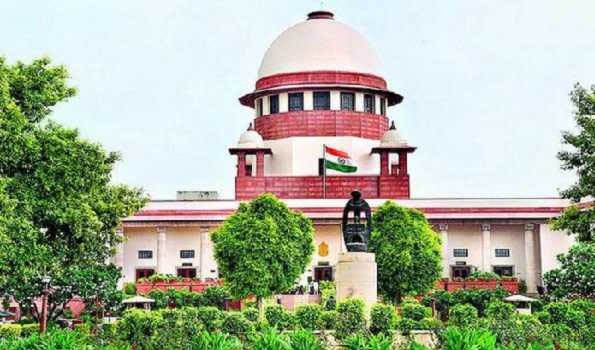New Delhi, Apr 8 (UNI) The Supreme Court on Tuesday directed the Centre and the Municipal Corporation of Delhi (MCD) to immediately remove all encroachments around the Lodhi-era monument “Gumti of Shaikh Ali”, located in Delhi’s Defence Colony.
A bench, comprising Justices Sudhanshu Dhulia and Ahsanuddin Amanullah, also directed the MCD to vacate its engineering department office currently operating within the monument premises. The space must be handed over to the Land and Development Office (L&DO) within two weeks.
To ensure that the court’s directions are followed, the bench instructed the local Deputy Commissioner of Police (DCP) and Traffic DCP to conduct daily inspections of the area.
The Court noted that the Defence Colony Residents Welfare Association (RWA), which had been asked to pay Rs 40 lakh as compensation for illegally occupying the monument for over 60 years, had not yet deposited the amount. The court granted them time till May 14 to comply.
On March 25, the Supreme Court had asked the RWA to pay for its long-standing unauthorised use of the 15th-century structure.
The Court also directed Delhi’s Archaeology Department to set up a restoration committee and ordered that the monument be peacefully handed over to the L&DO.
Historian Swapna Liddle, former convener of the Delhi chapter of INTACH (Indian National Trust for Art and Cultural Heritage), was appointed by the Court to inspect the monument, assess the damage, and provide recommendations for its restoration.
In an earlier hearing in November 2024, the Supreme Court criticised the Archaeological Survey of India (ASI) for failing to protect the monument. The Court also pulled up the RWA for occupying the structure since the 1960s and using it as their office, even making unauthorised changes, such as installing a false ceiling.
“What kind of authority are you? You have gone back on your mandate of protecting ancient structures,” the bench asked ASI.
The RWA tried to justify its occupation by claiming they were protecting the monument from misuse by anti-social elements. But Justice Amanullah rejected this argument and expressed displeasure over their conduct.
The Court had earlier ordered a CBI inquiry to investigate how the RWA came to occupy the tomb and to report on any structural changes. The agency confirmed that modifications were made and that the ASI had initiated the process of declaring the site protected in 2004, but later abandoned the plan in 2008 due to objections from residents.
The ongoing case is based on a petition by Rajiv Suri, a Defence Colony resident, who challenged a 2019 Delhi High Court order that refused to declare the tomb a protected monument under the Ancient Monuments and Archaeological Sites and Remains Act, 1958.
Suri supported his claim with historical documents, including a 1920 survey by British-era archaeologist Maulvi Zafar Hasan, which listed the structure as a historical site.











